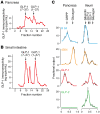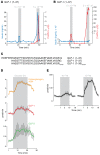Discovery, characterization, and clinical development of the glucagon-like peptides
- PMID: 29202475
- PMCID: PMC5707151
- DOI: 10.1172/JCI97233
Discovery, characterization, and clinical development of the glucagon-like peptides
Abstract
The discovery, characterization, and clinical development of glucagon-like-peptide-1 (GLP-1) spans more than 30 years and includes contributions from multiple investigators, science recognized by the 2017 Harrington Award Prize for Innovation in Medicine. Herein, we provide perspectives on the historical events and key experimental findings establishing the biology of GLP-1 as an insulin-stimulating glucoregulatory hormone. Important attributes of GLP-1 action and enteroendocrine science are reviewed, with emphasis on mechanistic advances and clinical proof-of-concept studies. The discovery that GLP-2 promotes mucosal growth in the intestine is described, and key findings from both preclinical studies and the GLP-2 clinical development program for short bowel syndrome (SBS) are reviewed. Finally, we summarize recent progress in GLP biology, highlighting emerging concepts and scientific insights with translational relevance.
Keywords: Diabetes; Endocrinology; Gastroenterology; Islet cells.
Conflict of interest statement
Figures






References
-
- Lund PK, Goodman RH, Habener JF. Pancreatic pre-proglucagons are encoded by two separate mRNAs. J Biol Chem. 1981;256(13):6515–6518. - PubMed
-
- Lund PK, Goodman RH, Montminy MR, Dee PC, Habener JF. Anglerfish islet pre-proglucagon II. Nucleotide and corresponding amino acid sequence of the cDNA. J Biol Chem. 1983;258(5):3280–3284. - PubMed
Publication types
MeSH terms
Substances
LinkOut - more resources
Full Text Sources
Other Literature Sources

